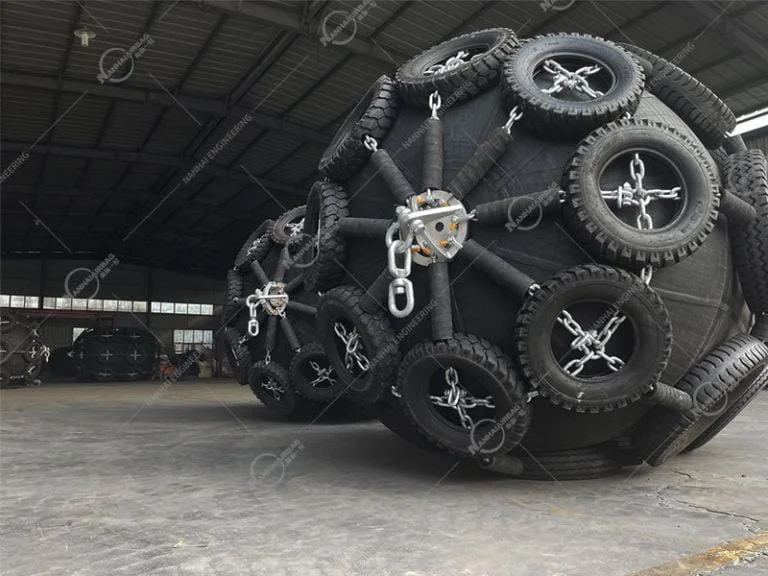How Should a Ship Be Moored?
06/02/2025Fenders for Safe Ship to Ship Operations
06/03/2025What is the function of the safety valve of the pneumatic fender
Introduction
Pneumatic rubber fenders play an important role in protecting ships and docks during berthing or cargo transfer. They absorb energy from collisions and reduce damage. One of the key parts of a pneumatic fender is the safety valve, which keeps the fender safe under high pressure.
What Does a Safety Valve Do in a Pneumatic Fender?
A safety valve is a pressure control device. When the internal air pressure becomes too high, the valve opens automatically and releases extra air. This helps prevent the fender from bursting or getting damaged.
Safety valves make sure that the fender works safely in all conditions, even when the ship-to-ship or ship-to-shore operations cause sudden impact or pressure increases.

NANHAI’s Patented Safety Valves for Large Pneumatic Fenders
At NANHAI, we install safety valves on all pneumatic fenders with diameters of 2.5 meters or larger. These safety valves include several patented technologies developed by our team.
Key features of NANHAI safety valves:
- Patented Design: Our safety valves use unique, patented structures that improve safety and performance.
- Galvanized Coating: Every valve has a galvanized surface to resist rust and corrosion in marine environments.
- Fast Pressure Release: The valve reacts quickly when the pressure gets too high, protecting the fender from damage.
Why Safety Valves Matter for Large Pneumatic Fenders
Large fenders face stronger impacts and higher internal pressure. Installing safety valves on these fenders helps:
- Protect the fender from over-inflation.
- Reduce the chance of failure during operations.
- Extend the lifespan of the fender.
NANHAI’s pneumatic fenders also use a four-layer structure (outer rubber, tire cord layers, an airtight layer, and inner rubber) to ensure strength and durability in tough conditions.
How to Maintain the Safety Valve on a Pneumatic Fender
To keep the safety valve working well, follow these simple maintenance tips:
- Inspect regularly: Check the internal pressure at least once every 6 months.
- Calibrate the valve: Test and adjust the valve every 2 years so it opens at the correct pressure.
- Replace if needed: If the valve shows signs of rust or wear, replace it to avoid safety risks.
- Inflate properly: Use the right tools and don’t exceed the recommended pressure when filling the fender.
Conclusion
The safety valve is a small but important part of every pneumatic fender. It protects the fender from damage and keeps ships and ports safe. At NANHAI, we take safety seriously. Our patented, galvanized safety valves are built into all fenders over 2.5 meters and help ensure safe and reliable performance for every marine operation.
